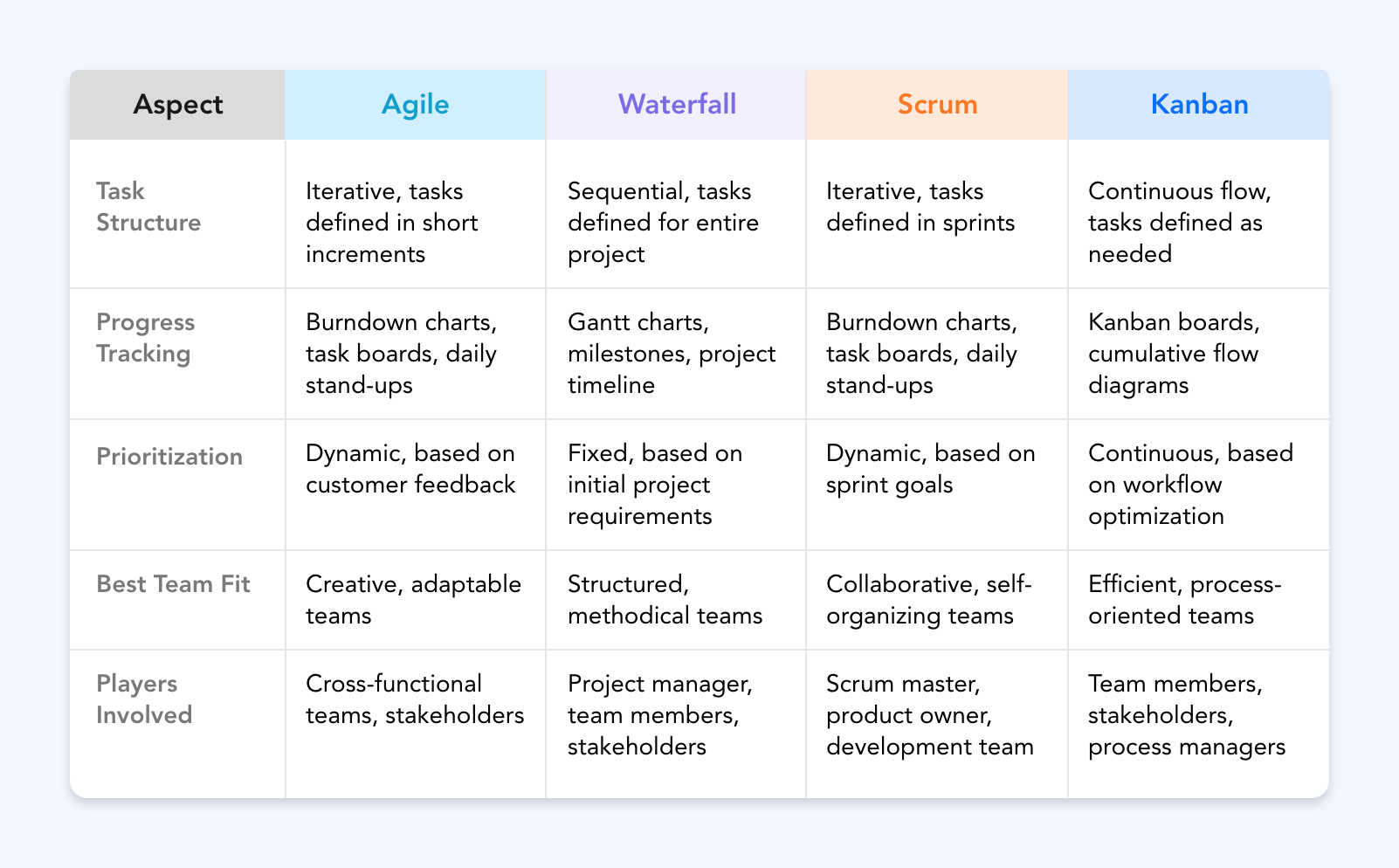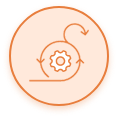There are many project management methodologies, styles, and tools out there.
Knowing where to start can be overwhelming, especially if you don’t follow a set process. That’s where we can help! With experience across various frameworks, we can adapt to whatever approach you need or use. And if you’re unsure, we can walk you through the options to determine the best route to success for your team.
Four of the most common project management methodologies are Agile, Waterfall, Scrum, and Kanban. Agile is about creating a collaborative process. Waterfall is about creating structure. Scrum enables fast delivery. Kanban focuses on monitoring and adjusting processes. We can help assess your project priorities to identify a framework and create a project plan that will work within those priorities. Let’s take a look at the pros and cons of each.
Agile
This is an iterative approach to delivering a project through its life cycle of planning, designing, developing, testing, deploying, and reviewing. Agile is often used in software development projects for speed and adaptability because iterations allow you to adjust as you go, releasing benefits along the way instead of only at the end. More than a methodology, it’s a philosophy based on four main values:
- Individuals and interactions over processes and tools
- Working software over comprehensive documentation
- Customer collaboration over contract negotiation
- Responding to change over following a plan
Agile: Pros and Cons
Pros
Cons
Waterfall
The most traditional method, waterfall project management maps out a project into distinct phases that cascade downward (like a waterfall!) sequentially, starting with requirements followed by design, implementation, verification, and ending with maintenance. Each new phase begins only when the previous one is complete. Team members work toward a set end goal and everyone involved has a clearly defined role. Waterfall is ideal for projects where the end result is clearly established at the outset and is best for projects that require a lot of predictability. The three key principles are:
- Maintain a low degree of customer involvement
- Establish strong project documentation
- Follow a sequential structure of projects
Waterfall: Pros and Cons
Pros
Cons
Scrum
While Agile is a project management philosophy that’s based on a core set of values or principles, Scrum is an Agile project management methodology used to facilitate a project. Scrum involves a small team led by a Scrum master, whose role is to remove any the obstacles team members may experience. Work is done in short cycles called sprints, and the team meets daily to discuss current tasks and any roadblocks preventing them from doing their work. It allows for rapid development and testing, relying on an iterative process, frequent client interaction, and collaborative decision making. The six principles of Scrum are:
- Empirical process control
- Self-organization
- Time-boxing
- Value-based prioritization
- Iterative development
- Collaboration
Scrum: Pros and Cons
Pros
Cons
Kanban
Kanban is a project management framework you can use to implement agile principles or agile methodology to visualize workflow and maximize efficiency. It’s founded on real-time communication, full transparency of work, and visual organization of progress. It also limits work in progress to ensure a smooth flow of tasks from start to finish. It introduces a visual aid, the Kanban board, to facilitate planning, scheduling and tracking work. The four 4 foundational principles of Kanban are:
- Ensuring easy implementation
- Making incremental changes
- Respecting current processes and roles
- Inspiring company-wide leadership
Kanban: Pros and Cons
Pros
Cons
Each methodology has its strengths and weaknesses. Whether you're drawn to the adaptability of Agile, the structured certainty of Waterfall, the rapid evolution of Scrum, or the streamlined efficiency of Kanban, we tailor our expertise to suit your needs, objectives, and organizational culture.








